July 2, 2016
It’s 10:00 am at Powerscourt Estate, and the excitement that has been humming through my body since yesterday afternoon is a low vibration in my fingers. It’s a combination of optimism and sense of “anything can happen,” and even after two years of traveling, I love feeling this way when I start a new adventure.
And so far, this adventure is picture perfect. I caught the afternoon bus into Dublin yesterday, and was lucky enough to strike up a conversation with my seatmate. She’s an au pair in London, and we chat about dancing (she goes with girlfriends a few weekends each year), the children she looks after, places we’ve traveled, and her friend’s restored farmhouse in Belturbet all the way into Dublin.
In Dublin I catch the DART train down the coast to Killiney, my home for the next few days. At first it’s sunny, but by the time the train is running along Dublin Bay, it’s turned grey and raining. I see my first rainbow over the Irish Sea, and that exciting tingle bursts forth into full-fledged appreciation for where I am at this moment.
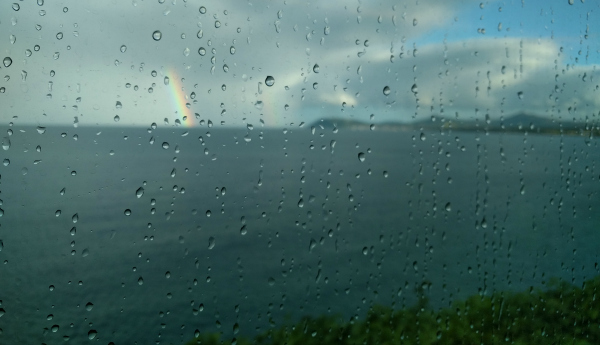
The rainbow stays with me as I travel south along the coast. After the close up of Dublin Bay, the train moves through various urban landscapes for several stops before coming right up to the water’s edge.
I move this way and that on my train seat, trying to take in the sweep of the bay in both directions. The sun’s come out now, but the rainclouds are still over the Irish Sea, keeping the rainbow alive and providing some interesting color contrasts.
As the train heads towards Killiney, I feel again all the excitement of the weekend ahead of me. My first view of Killiney Head could not be more perfect.
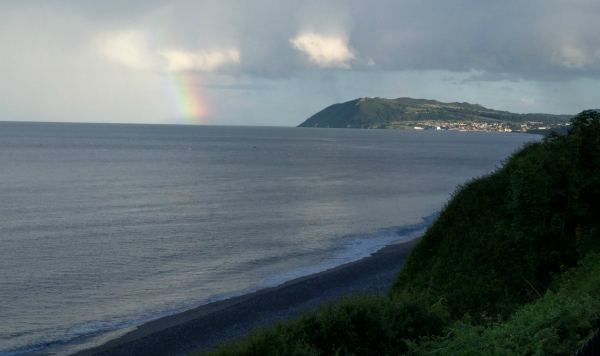
As I leave the train I hear the murmur of the Irish Sea lapping against the shore. It accompanies me as I walk through a very posh neighborhood. I find out later that Killiney Head is *the* place to live in Dublin – lots of big houses with privacy fences, security cameras, and lovely landscaping.
The townhouse I’ve rented is not in this posh neighborhood, but it’s a lovely townhouse and Simon and Jeanne make me feel welcome instantly. They’re a few years older than I am, with three boys: Gabriel, Tristan, and Simon (nickname Lulu). Jeanne is French and has just yesterday quite her job at Google, while Simon is Irish and teaches music.
Jeanne sits me down with a cup of tea while Simon introduces me to the first beer that I have ever liked: Hoegaarden. We talk around the kitchen table for a couple of hours, and I’m struck by how comfortable I feel in their presence, as if I were talking to some of my university friends.
In fact, Jeanne is the reason I am now sitting at the terrace café at Powerscourt Estate, the most famous country home in Ireland. She comes nearly every weekend with her boys, and today she offered to give me a lift and get me inside on her membership card.
Even from the terrace, the views of the estate are stunning. Most captivating to me is Sugarloaf Mountain, which is perfectly framed from the back of the house.
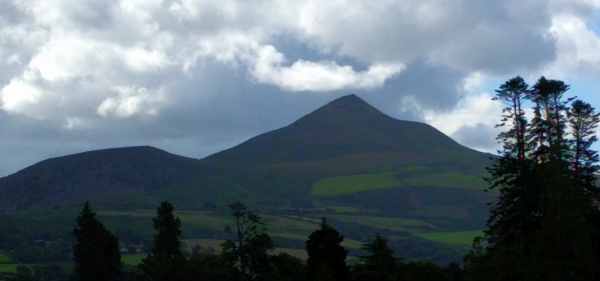
Powerscourt Estate has existed for around 800 years, although it didn’t come into its own as the premier Irish country estate until the 1800s. A medieval castle existed on this spot, which was incorporated into the 68-room Palladian mansion that was built in the 1730s and 1740s. It’s a great rectangular building, all grey stone and rounded windows that is imposing because of its sheer size and symmetry.
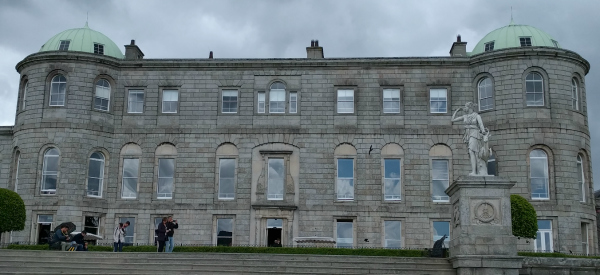
During the second half of the 1800s, the 7th Viscount Powerscourt renovated the house again and completely redid the gardens. His family name was Wingfield, which explains why there are winged horses in the family crest:
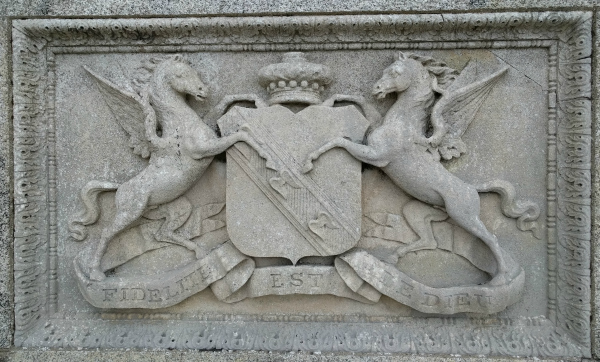
and guarding the entrance to Triton Lake:
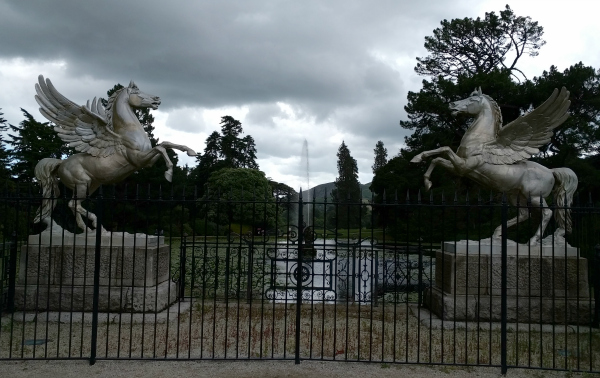
From what I could tell both onsite and from later research, the house became “the finest country home in Ireland” sometime during the late 1800s and into the early 1900s, probably because of all the renovations done by the 7th Viscount.
The story goes quiet for a while after that, before resurfacing in 1961 when the 9th Viscount Powerscourt sold the estate to the Slazenger family. The Slazenger family spent a great deal of time and money restoring the property to its late 1800s splendor. Then, in 1974, on the night of the press release announcing the completion of the renovations, something caught fire in the house and the entire inside of the house burned up.
Today only the shell of the house remains, along with a couple of rooms used for private events, the tea room, and the souvenir shop. And, most importantly, the gardens. The gardens are considered a must-see if one is anywhere near Dublin, so I’m eager to see what all the fuss is about.
After a breakfast of tea and scones on the outdoor terrace, we’re ready to explore. Jeanne and the boys head off with some friends of theirs, while I step off the terrace onto a wide graveled path.
I’m immediately reminded of being at Versailles: the sheer immensity of the manicured space is accentuated by neat graveled paths and wide expanses of brilliant green lawns. The trees have been trimmed into specific shapes
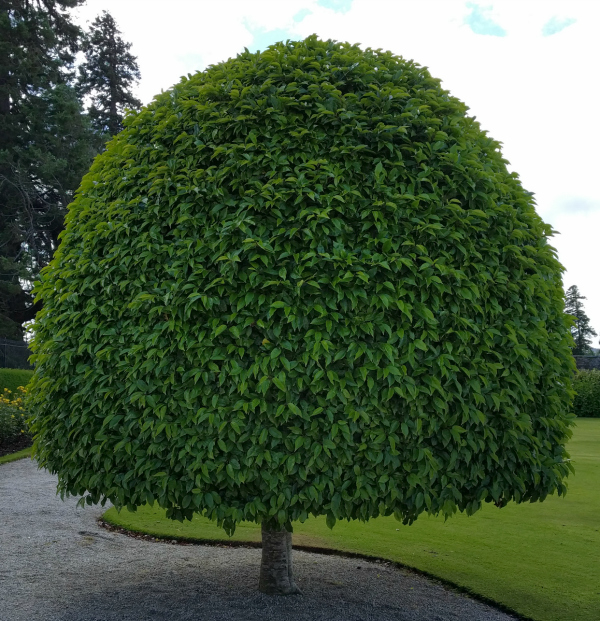
and the gates that lead from one garden to the next are as gilded and ornate as one would expect.
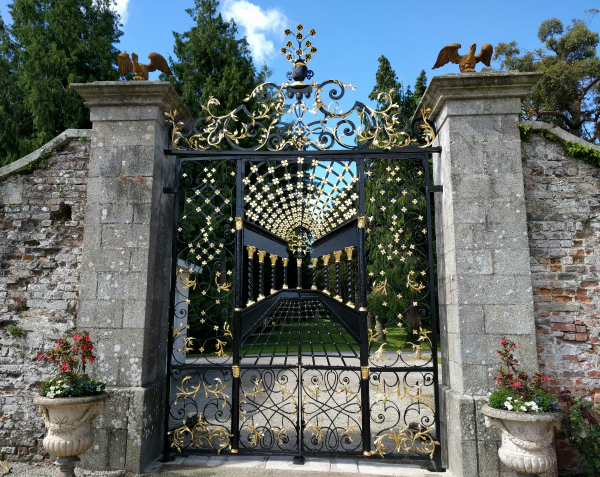
My first stop is the rose garden, tucked away next to the house.

I spend a great deal of time sniffing the different roses. My favorite is a brilliant yellow one that smells, surprisingly enough, like lemons.
Next to the rose garden is Julia’s Memorial, which was dedicated by one of the Viscounts Powerscourt to his mother Julia.
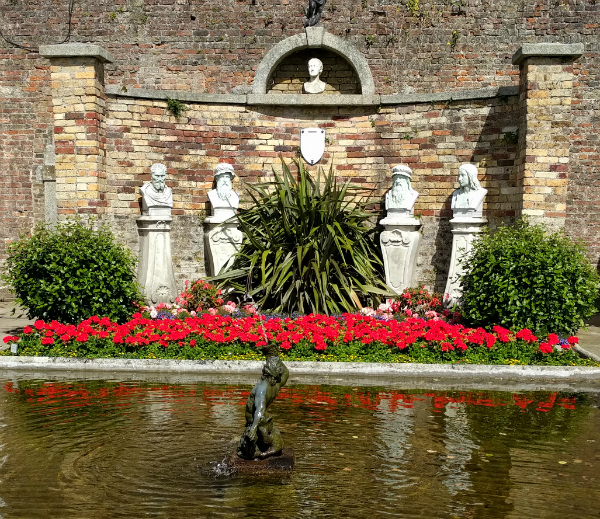
The gardens are getting busier as I leave Julia’s Memorial behind. The sun’s out and several families with children are swirling around me on the path.
One little boy in a yellow raincoat seems particularly taken with water. He tries to climb into the pool at Julia’s Memorial, and then again into the Dolphin Pond some time later.
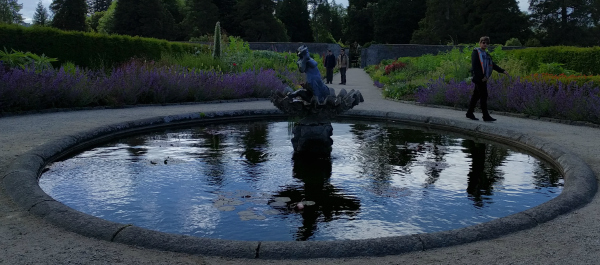
The path that leads up to the Dolphin Pond has its own fountain, bordered by these glorious purple plants.
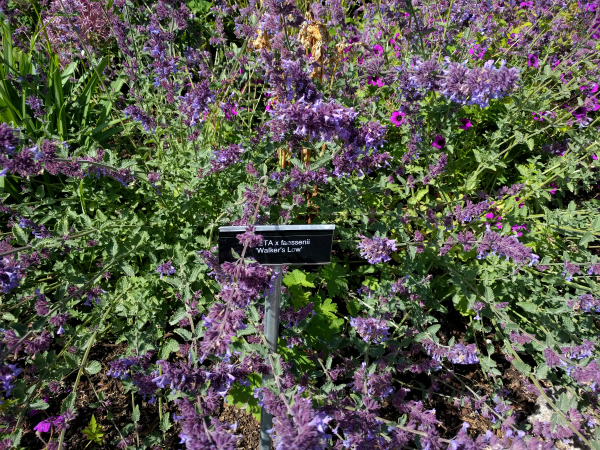
They look a bit like lavender, but a sign nearby tells me they’re called “Walker’s Low.” They don’t smell like much to my human nose, but they seem to be very attractive to the local bees.
The entrance to the pond itself is another ornate gate, set in its own brick wall.
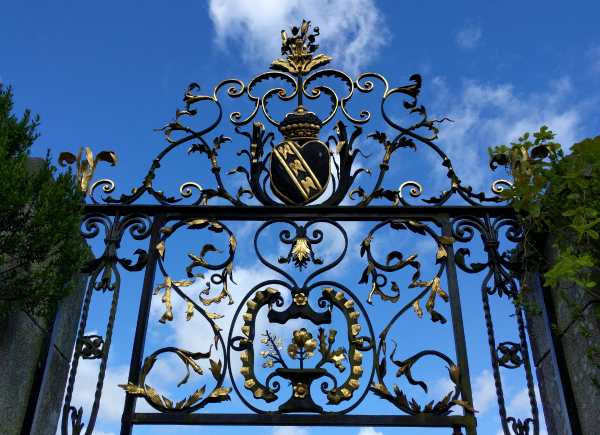
After coming through the walled gardens, the Dolphin Pond itself is a pretty enough place.
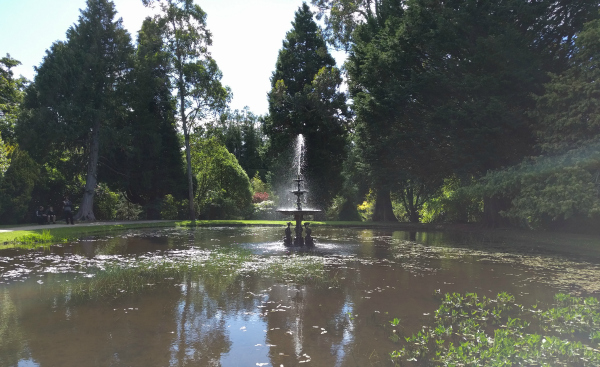
There’s no mention of why the dolphin motif was chosen, only that the fountain itself was purchased in Paris in the late 19th century. The trees around the pond are stunning. Tall and stately, they are over 150 years old.
Beyond the Dolphin Pond is one of my favorite places on the estate: the pet cemetery.
The estate map describes this part of the gardens as “one of Ireland’s largest pet cemeteries.” There are several dozen headstones in all, mostly for dogs and a few horses. Two in particular catch my attention:
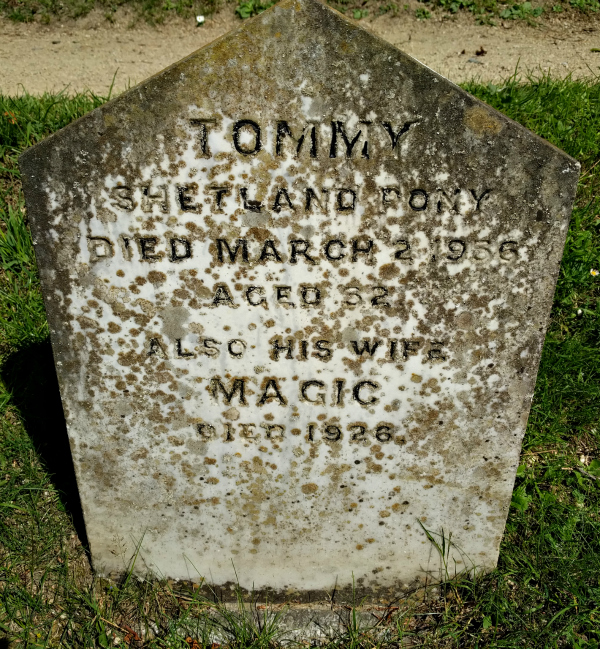
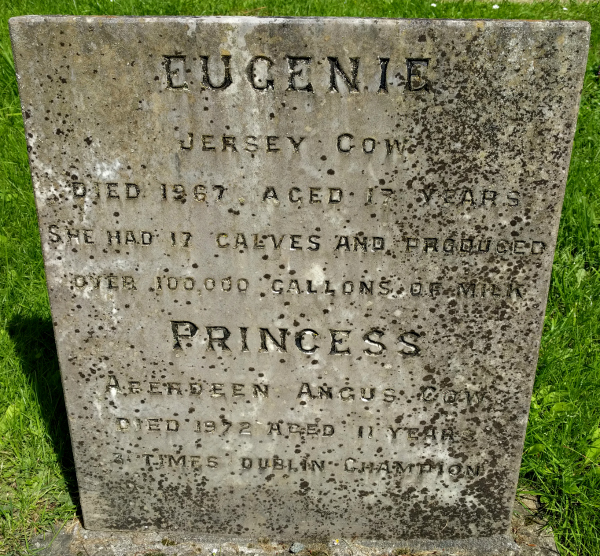
Like most cemeteries, there’s an aura of peace and tranquility about this small corner of the garden. I stand in the sunshine for several minutes, imagining the animals commemorated here at play or work with their human companions.
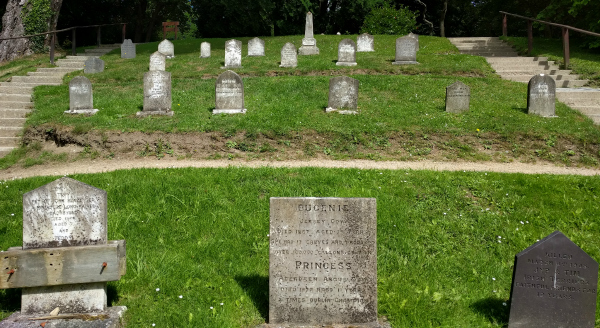
Conscious of the fact that I’m on a bit of a schedule, I reluctantly leave the pet cemetery and follow the graveled path downhill to Triton Lake.
Just before I get to the lake, I pass a tree whose trunk has been carved on by hundreds of previous visitors.
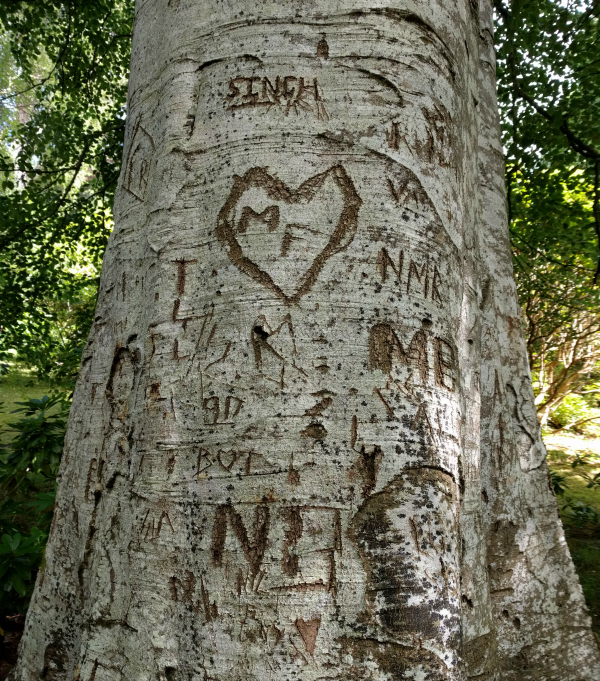
I am both disgusted by the hubris of carving one’s name into this beautiful tree, and appreciative of the desire to make one’s self a part of these gardens.
When I get to Triton Lake, the view is stunning.
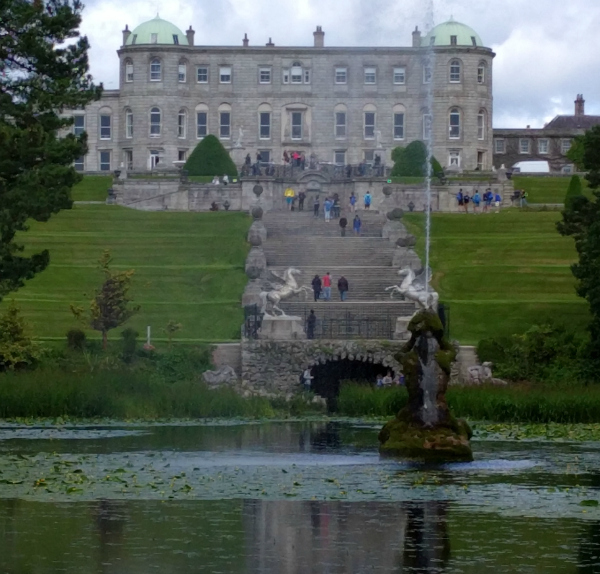
Like most country houses, Powerscourt was designed to look its best as seen from the garden side. It is easy to imagine those steps filled with ladies in fancy dresses and men in formal attire, sipping glasses of Champaign or eating hors d’oeuvres off delicate silver platters.
From here, a quick glance at my map tells me that there are only two bits of the garden left to see: the Japanese Garden and Tower Valley.
From a purely aesthetic point of view, the Japanese Garden is my favorite part of the Powerscourt gardens.
My first glimpse is of narrow, twisting passageways below me.
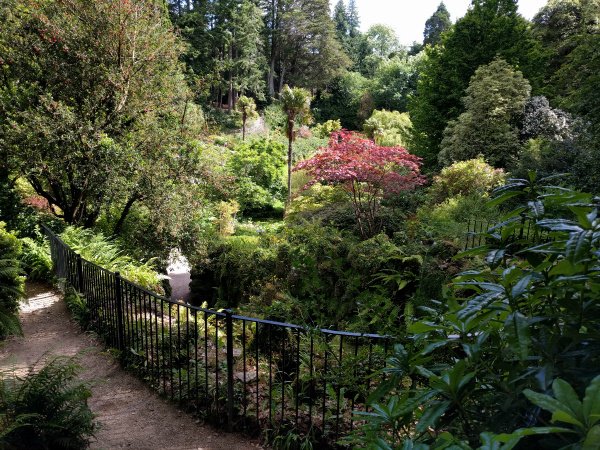
The map describes the gardens as having an air of romance, but I feel mysterious and secretive as I explore the steep flagstone stairways and narrow path.
There are intriguing grottos
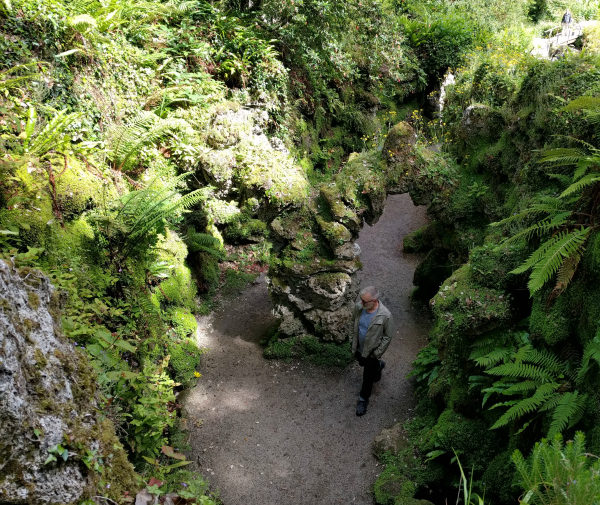
and little bridges crossing the stream fed by a stepped waterfall at one end of the garden.
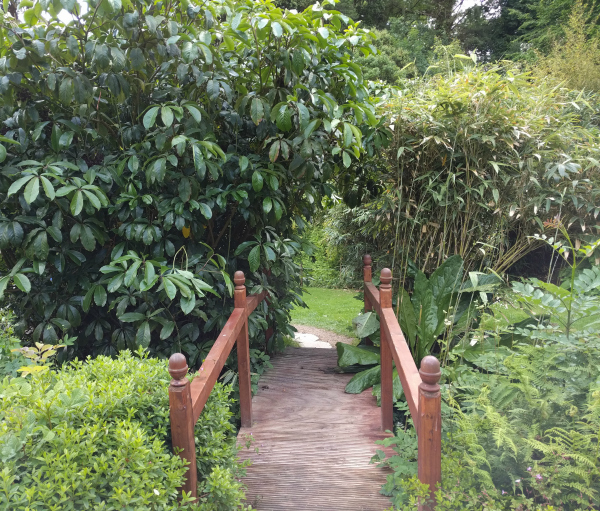
Because the passageways are cut into the rocks, several flowers are at eye level, including these two:
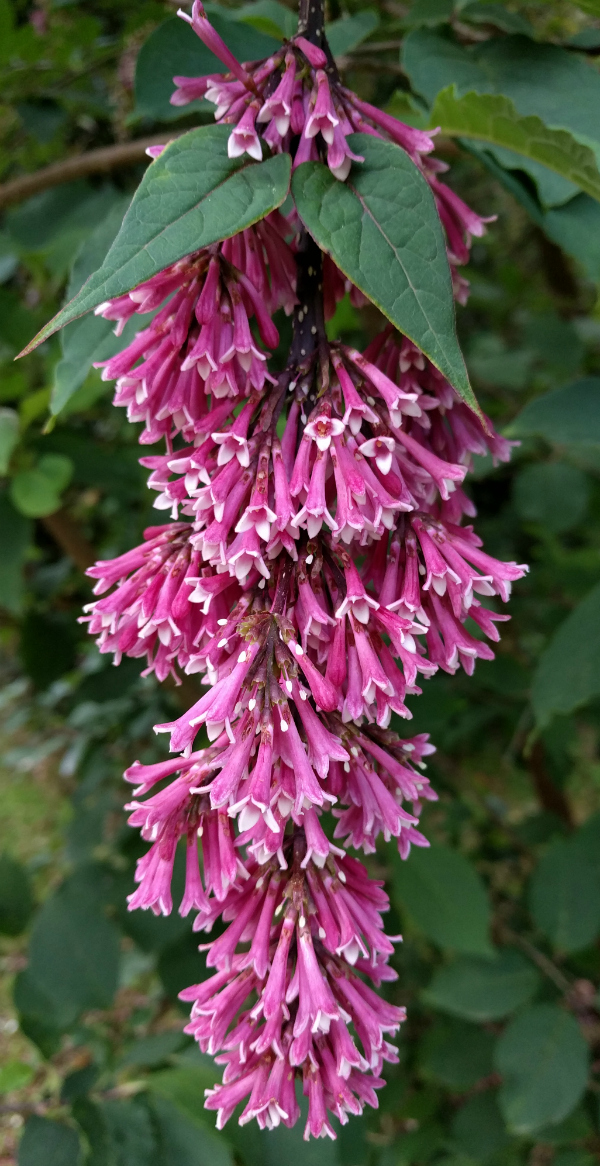
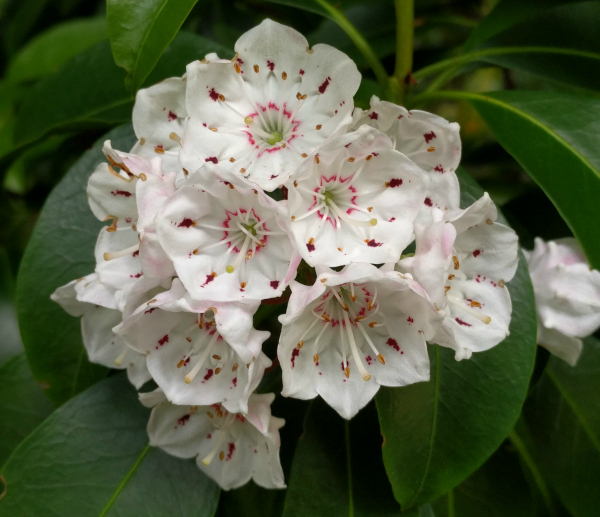
It doesn’t take long to move through the garden, but it’s an unforgettable experience of being delighted by every turn of the path.
As I climb out of the grotto, I take one last look back. I think the 8th Viscount & Viscountess, who designed the grotto in 1908, would be delighted to know that more than a century later, the grotto is still delighting visitors.
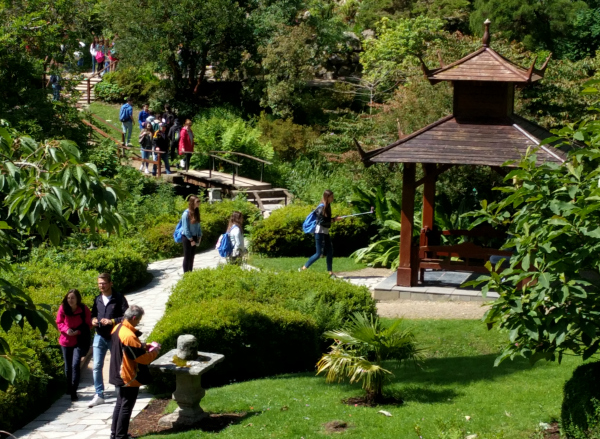
As I emerge from the grotto, I run across Jeanne and her friends. I haven’t seen them since back at the Rose Garden, but somehow we’ve managed to converge on the path to Tower Valley at the same moment.
Our paths soon split, however, as Jeanne’s friend has a stroller while I take the more adventurous footpath. My path winds gently upward through open parkland and tall oak trees before starting a steeper ascent to the Tower itself.
After getting glimpses of the Tower through the trees, I finally get a clear shot of the Pepperpot Tower.
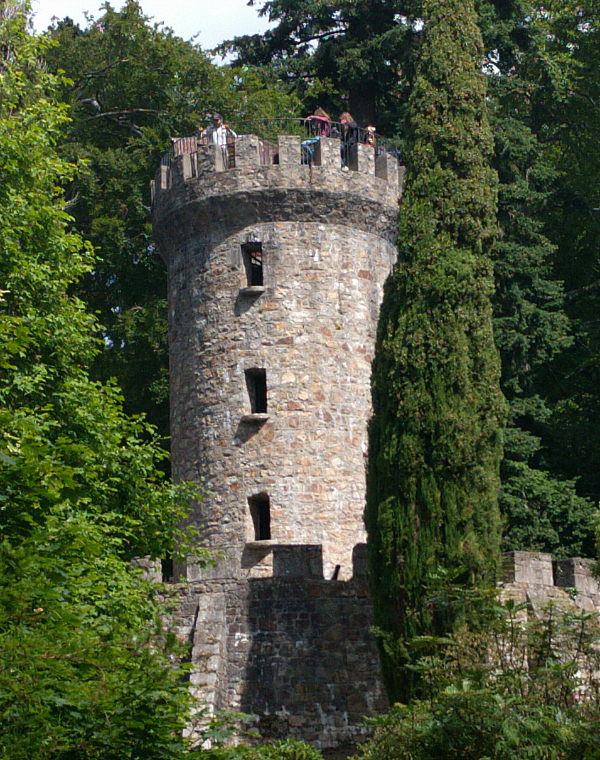
According to family history, the tower was built in the 1860s or 1870s, and was modelled on Lady Wingfield’s favorite 3-inch pepperpot!
It is a short climb to the top of the tower, with stunning views over the estate and west to Sugarloaf Mountain. I strike up a conversation with an older couple who followed me up the tower. They live nearby but have done a great deal of traveling.
I ask about their visit to the Leaning Tower of Pisa, and they give me some good advice about places to go and things to do while in Ireland. Like nearly everyone I meet, they are impressed that I am traveling by myself, and have a good grasp on what I want to see while I’m here.
The clouds are starting to roll in as I make my way back down the tower, and it starts to rain as I find my way back to the terrace. I don’t see Jeanne or her friends, so I take a few last pictures of the winged horses guarding Lake Triton
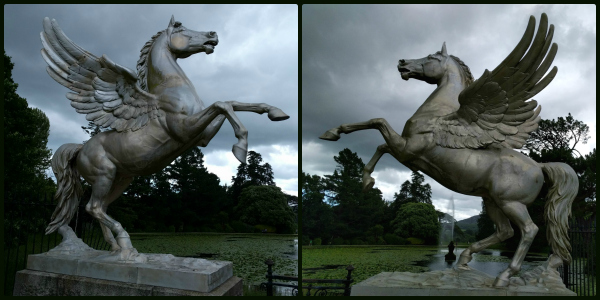
and a particularly interesting bit of statuary at a nearby fountain.
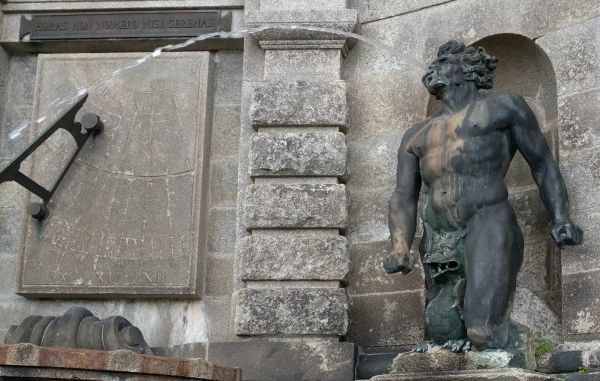
There’s a bit of confusion over finding Jeanne and the boys. They are ready to head home; I would like to stay longer and visit Tara’s Palace, which has one of the most exquisite dollhouses in the world. However, Jeanne has also very kindly agreed to drive me out to the Powerscourt Waterfall (the highest in Ireland), and a waterfall beats a dollhouse any day.
The drive out to the waterfall is longer than I expect. In researching my visit to Powerscourt, I read that the waterfall is nearly 7 miles away, and that it’s not recommended to walk there as there’s no trail. Nevertheless, we do pass several cyclists and walkers on the narrow road doing just that.
Jeanne’s annual Powerscourt membership gets us in for free at the waterfall gate. It’s a short drive through the woods, and then suddenly the waterfall is before us.
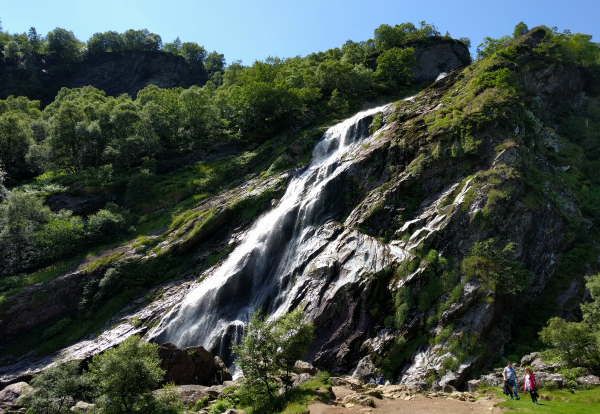
There is something so Irish, so mystical about the waterfall that I can’t stop taking pictures. It doesn’t have the thundering majesty of a straight drop waterfall, but the play of white lacy water against the rocks with the green trees framing it is magnificent.
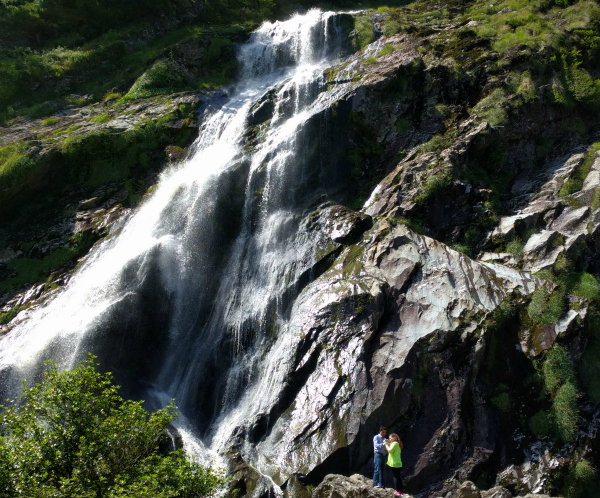
There’s a pool at the base of the falls, littered with big boulders that are extremely tempting to climb. In fact, several families and couples are doing just that. As I climb over a couple to get a better picture, I remember a story from the interpretive video at the Powerscourt house.
The story goes that King George IV visited Powerscourt in 1821. Someone had the brilliant idea of building a little bridge at the base of the falls for the King to stand on, and then damning the falls to make for a more spectacular show when the water was released.
Luckily for everyone involved, King George IV was having so much fun at the house that he never made it to the waterfall. Because when they did release the damn, the force of the water swept the King’s bridge clean away!
There are hiking trails leading off in all directions from the waterfall, and I would love nothing more than to hike this area all afternoon. But then I remember the long drive to get here, and the even longer walk back to town, and I decide to take Jeanne up on her offer to drop me in the seaside town of Bray.
We take a scenic route back to the coast, driving through the Wicklow Mountains which are more hill than mountain to my American eyes. After a morning of taking in all the sensations of the Powerscourt Gardens, it feels very good to take a break and let my impressions of the morning sink in.
Next up: an afternoon cliff walk along the Irish Sea!

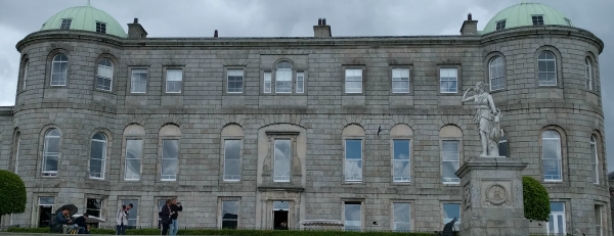









Leave a Reply